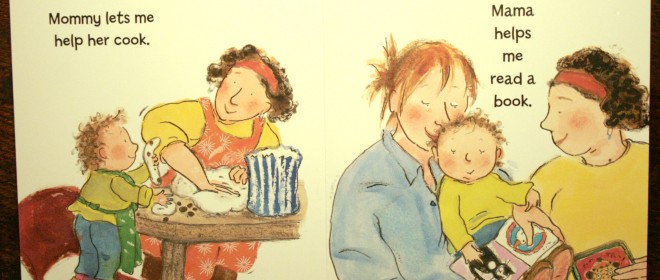
My husband and I are progressive and we’ve always lived in a big city, filled with diverse people, racially, sexually, economically, religiously, etc. Because of work, we’ve had to move to a small, conservative Midwestern town. There isn’t a lot of openness when it comes to the LGBT population. We have our suspicions on who might be, but nothing is verified. It is very much “Don’t Ask, Don’t Tell” around here. I want our kids to be accepting of all people, no matter their orientation. How do I introduce the concept of gay people to them? I almost want to seek some gays out so my kids can know them as people, but that feels like I’m turning this into a zoo visit. Should I be showing them films and TV shows and pointing out the gays? I want my kids to be comfortable and non-judgmental, but it’s tough when we can’t have real life experiences.
I can certainly understand your concern. It’s always difficult when we live in an area that doesn’t altogether reflect our values and political viewpoints. It’s a whole lot easier to help our children be understanding and accepting of all kinds of diversity when it’s part of the fabric of our lives, but that doesn’t mean there aren’t fairly easy ways to achieve those goals.
I don’t know how old your kids are, but assuming they’re relatively young, you will have plenty of opportunities to influence their values and perspectives. I always impress on parents who support LGBTQ rights to make sure their kids know that. When they’re young, you don’t have to approach it in a political way. It can just be part of natural conversations and pretend play. Talk about different kinds of families. Make sure your children know there isn’t one right or normal type of family. When playing pretend, suggest that two girl or two boy dolls/figures/stuffed animals can get married and be the parents. Also, if you go online you can find plenty of books for kids with gay characters. Just read the books with them. If they ask questions, great! But you don’t have to go out of your way to point out what’s going on in the books. If you do watch TV shows or movies with gay characters, make sure they’re portrayed in a way you would want them to be. If not, talk about that–just as you should always deconstruct media images and messages for your kids.
I would make this all as natural as possible. There are subtle (and not so subtle) ways in which you choose to influence your children’s values every day; this is no different. Just as there are always opportunities to point out that cheating and lying aren’t OK—or that girls can grow up to be doctors and boys can grow up to be nurses—there are always chances to let them know that a family does not have to consist of a father and a mother.
Your children may well receive a very different message at school and from their friends, particularly as they get older. Just make sure that your voice continues to be heard. And make it clear that while they are not required to defend this point of view, there is certain language you simply will not accept. Even if your kids and their friends are not using blatant slurs, explain why referring to something or someone as “gay” is not OK. Kids will often argue that they are “not using ‘gay’ that way.” But that’s beside the point. They are using it in a derogatory way. Thus, “gay” is a quality one wants to avoid. (In a not completely unrelated aside, I hope you will also not tolerate words that demean girls and women, like “slut.” See my May 11, 2014, blog post “Casual Slut Shaming” for a discussion on this topic.)
Finally, I urge you not to forget that LGBTQ has three other letters beyond the “L” and the “G” (and some add on a few more letters). The more you talk about different expressions of sexuality and gender when they are young, the more accepting they will be as they get older.




